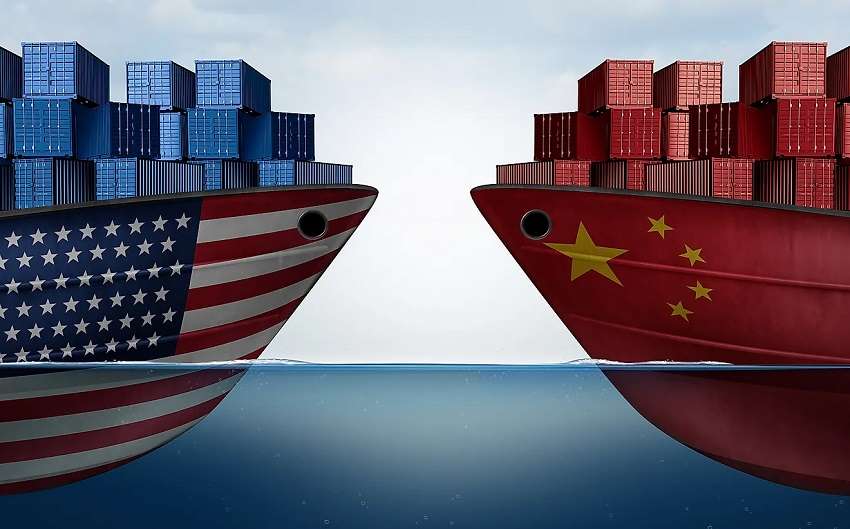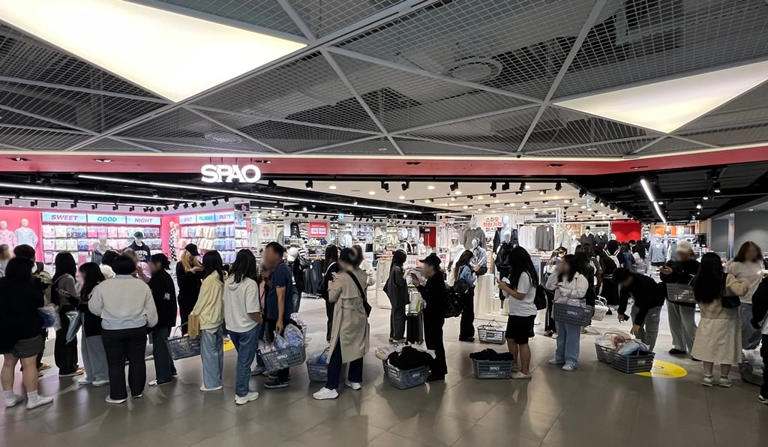FW
Due to Bangladesh's recent closure of its land ports to yarn exports from India, Indian textile mills are seeking alternative transportation methods for the same.
Approximately 30 per cent of India's yarn exports to Bangladesh, primarily dyed and specialty yarns, were previously transported via these land ports.
At a recent meeting, yarn exporters discussed options such as container shipping and inland waterways. They also met with buyers in Bangladesh.
Siddhartha Rajagopal, Executive Director, Cotton Textiles Export Promotion Council, notes, while 70 per cent of Indian yarn already goes to Bangladesh by sea, the increased lead time for those who previously used land ports is a concern. Exploring smaller ships from Kolkata can be a potential solution for this, he suggests. .
K. Selvaraju, Secretary General, Southern India Mills’ Association, states, nearly 45 per cent of India's yarn exports go to Bangladesh. Overall Indian yarn exports have decreased from over 100 million kg a month to approximately 90 million kg, with China and Bangladesh being the primary markets. This reduction in Chinese imports has already impacted the industry, and further disruption of exports to Bangladesh could lead to increased domestic supply and decreased prices, affecting the entire textile value chain.
Currently, textile mills in northern India are most affected by the port closures. However, if the situation persists, the entire textile spinning sector could face repercussions.
London’s renowned boutique trade show, Scoop, returns for its Spring/Summer 2026 edition from 13 to 15 July 2025 at Olympia National Kensington. Curated by founder and managing director Karen Radley, the event promises an intimate yet dynamic platform for buyers to explore over 200 premium designer labels across womenswear, footwear, accessories, jewellery, beauty, and lifestyle.
Radley emphasised her passion for introducing emerging creatives, saying, “We’re creating a wonderful showcase celebrating originality and forward-thinking design, with each collection offering something uniquely captivating for the market.” The show’s move to Olympia National Kensington marks a new chapter, offering increased opportunities for surprise and engagement.
Among the spotlighted brands is Ivory Paris, offering accessible luxury with Italian-crafted separates in cashmere, silk, and merino wool. Korean label Norinine brings its relaxed, seasonless aesthetic and celebrity-favoured wardrobe staples to UK shores. From France, Requins presents heritage footwear in quality leathers, while Maison Boinet, founded in 1858, showcases elegant belts and accessories symbolising discreet luxury.
In jewellery, Paris-based Zag Bijoux will unveil its premium line, Zag Studio, set to debut at Scoop and expected to become a cult favourite. Already stocked at Harvey Nichols and Fenwick, the brand’s latest venture signals Scoop’s commitment to presenting innovation within heritage.
Recognised as one of Europe’s most exciting lifestyle events, Scoop’s 2025 edition continues to spotlight global craftsmanship and fresh vision in a curated space designed to inspire top-tier retail buyers from the UK and beyond.
Los Angeles-based premium denim brand, Paige launched a new campaign for its American consumers on the Earth Day.
Launched in partnership with a UK-originated program, Cotton Lives On (CLO), this campaign encourages the brand’s consumers in America to recycle their used jeans.
Similar to Cotton Incorporated’s Blue Jeans Go Green program, established in the US in 2022 through a collaboration between Cotton Council International and Cotton Incorporated, the program helps prevent unwanted cotton textiles from being dumped into landfills.
Continuing throughout 2025, the Paige x CLO initiative invites consumers to drop off their unwanted jeans in specially marked Paige x CLO bins located at the brand’s stores in London and Oxfordshire. In return, participants receive a 20 per cent discount on a new denim purchase.
The collected denims are being recycled into cotton insulation used in mattresses for individuals experiencing homelessness.
Lindsey Owens, Director -Omnichannel Marketing, Paige, states, leftover fabric scraps from Paige’s denim production are repurposed as art projects for schools, while other scraps are recycled into insulation and carpet padding. The brand’s partnership with CLO provides an ideal platform to emphasize its dedication to cotton sustainability, she adds.
Andrea Samber, Director - Consumer Marketing Brand Partnerships, Cotton Incorporated avers, this initiative encouraging Paige customers to keep old cotton out of landfills by turning their well-worn clothes into comfortable mattresses for those in need.
To date, CLO has collected nearly 17,600 pounds (approximately 8,000 kg) of cotton in the UK and has donated over 100 roll mats. Each new roll mat contains about 14 pounds (6.4 kg) of unusable cotton, equivalent to 45 t-shirts. These mattresses are provided to people across the UK at risk of homelessness and living in challenging conditions as part of their initial essential items package when moving into a hostel or as part of their new home kit once they have found more permanent housing.
Other brands and retailers already participating in the program include Charles Tyrwhitt, Hush, Whistles, Hobbs, Phase Eight, L’Estrange, Anthropologie, Bianca Saunders, Nexvision, and ME+EM.
Los Angeles-based premium denim brand, Paige launched a new campaign for its American consumers on the Earth Day.
Launched in partnership with a UK-originated program, Cotton Lives On (CLO), this campaign encourages the brand’s consumers in America to recycle their used jeans.
Similar to Cotton Incorporated’s Blue Jeans Go Green program, established in the US in 2022 through a collaboration between Cotton Council International and Cotton Incorporated, the program helps prevent unwanted cotton textiles from being dumped into landfills.
Continuing throughout 2025, the Paige x CLO initiative invites consumers to drop off their unwanted jeans in specially marked Paige x CLO bins located at the brand’s stores in London and Oxfordshire. In return, participants receive a 20 per cent discount on a new denim purchase.
The collected denims are being recycled into cotton insulation used in mattresses for individuals experiencing homelessness.
Lindsey Owens, Director -Omnichannel Marketing, Paige, states, leftover fabric scraps from Paige’s denim production are repurposed as art projects for schools, while other scraps are recycled into insulation and carpet padding. The brand’s partnership with CLO provides an ideal platform to emphasize its dedication to cotton sustainability, she adds.
Andrea Samber, Director - Consumer Marketing Brand Partnerships, Cotton Incorporated avers, this initiative encouraging Paige customers to keep old cotton out of landfills by turning their well-worn clothes into comfortable mattresses for those in need.
To date, CLO has collected nearly 17,600 pounds (approximately 8,000 kg) of cotton in the UK and has donated over 100 roll mats. Each new roll mat contains about 14 pounds (6.4 kg) of unusable cotton, equivalent to 45 t-shirts. These mattresses are provided to people across the UK at risk of homelessness and living in challenging conditions as part of their initial essential items package when moving into a hostel or as part of their new home kit once they have found more permanent housing.
Other brands and retailers already participating in the program include Charles Tyrwhitt, Hush, Whistles, Hobbs, Phase Eight, L’Estrange, Anthropologie, Bianca Saunders, Nexvision, and ME+EM.
Sudhakar Singh, Member of Parliament, representing Buxar from the Rashtriya Janata Dal (RJD) party, has urged Prime Minister Narendra Modi to implement the Prime Minister Mega Integrated Textile Region and Apparel Park (PM-MITRA) scheme in Bihar.
Recently announced by the Central Government, the PM-MITRA scheme allocates textile parks for seven excluding Bihar, Singh points out.
An industrially underdeveloped state, Bihar has significant potential for the textile industry, he adds.The state has identified 1,719 acre for this project and submitted the preliminary project report to the Ministry of Textiles before the March 15, 2022, deadline, Singh notes.
While states like Gujarat, Maharashtra, Tamil Nadu, and Karnataka already possess well-established textile industries, Bihar lacks any modern textile clusters, Singh highlights. Scarcity of job opportunities forces workers from the state to migrate. Establishing a PM-MITRA park would not only create local employment but also significantly reduce large-scale migration, he adds
German textile machinery leader Monforts will participate in the Morocco Stitch & Tex 2025 exhibition from May 13-15 at Casablanca’s International Fairground (OFEC), as North Africa looks to strengthen its position in textile manufacturing and finishing.
Morocco and neighbouring countries are rapidly expanding their textile processing capacity to complement strong garment exports, leveraging their strategic proximity to Europe, lower costs, and favourable trade agreements, including Morocco’s 2006 free trade pact with the USA. The region could also benefit from potential new US tariffs on Asian imports, boosting its global competitiveness.
At the event, Monforts will present its proven technologies for energy-efficient and high-throughput fabric finishing. These include the Montex stenter, a benchmark in the denim and home textiles sectors, along with Thermex dyeing ranges, Monfortex compressive shrinking systems, MontexCoat and coaTTex coating units, and relaxation dryers. The company celebrated 140 years of innovation in 2024 and continues to serve clients from its headquarters in Monchengladbach, Germany, and production facility in Austria.
Monforts emphasizes not just new machinery but also the value of retrofitting legacy lines. With around 2,000 machines in use globally some over 30 years old upgrades with advanced automation and control systems are enabling significant performance improvements.
“We’ve seen double-digit growth in European machinery imports to Morocco,” says Area Sales Manager Achim Gesser. “Exciting projects, including a planned $2 billion textile city with 568 factories, are underway.” He adds that Turkish manufacturers are expanding into North Africa, with Monforts already operating over 600 lines in Turkiye.
Gesser and Unionmatex, Monforts regional partner, will be at stand D4 to support the region’s ambitious Vision 2025 programme targeting $10 billion in annual garment exports.
Tariffs imposed by the US on major textile-exporting countries including Bangladesh will help Kitex Garments boost total revenues to Rs 1,000 crore in 2025, anticipates the company.
The company expects revenue to reach Rs 5,000 crore ($600 million approx.) once their new textile plants in Telangana are fully operational, further highlighting their positive outlook on market conditions. .
Earlier this month, the US announced tariffs on all economies, sparking a trade war and causing significant disruptions in major markets. These tariffs included a 26 per cent levy on India, which is notably lower than those imposed on other textile-exporting countries, giving India a distinct advantage.
Bangladesh faces a 37 per cent tariff, while China's exports to the United States incur a levy of over 100 per cent. Other major textile-exporting nations also face higher tariffs than India, providing the country with a competitive edge over its rivals.
These tariffs are expected to benefit the Indian textile industry. Combined with the tariffs on other nations and the current political instability in Bangladesh, they could potentially increase India's presence in the textile market, states Kitex.
As per data from the US Office of Textiles and Apparel (OTEXA), from January-November 2024, India's garment exports to the US increased by 4.25 per cent to $4.4 billion while those of its neighbor, Bangladesh, declined by 0.46 per cent to $6.7 billion, as per a Reuters report.
Lower tariff rates compared to major competitors allow Kitex to offer more competitive pricing while maintaining profit margins. Kitex aims to serve 1 per cent of US textile garment requirements, representing a significant portion of potential Indian exports to the US. It has invested Rs 3,550 crore ($426 million approx.) in its production facilities to meet increased demand from US buyers seeking suppliers facing lower tariffs.
Olalade Majekodunmi, National Coordinator, Nigerian Cotton Cooperative Society (NCCS) has applauded the National Economic Council's (NEC)’s plan to establish a Cotton, Textile, and Garment (CTG) Development Board, along with initiating a comprehensive ₦90 billion (Nigerian Naira) agribusiness and livestock plan.
According to Majekodunmi, overseen by Kashim Shettima, Vice President, the project will pave the way for Nigeria’s industrial and agricultural revival besides transforming the industry.
Also serving as the Managing Director, House of Dorcas Integrated Services (HDI), Majekodunmi described these initiatives as a bold and strategic move.
This approval signals a strong commitment from the Federal Government to revitalize Nigeria’s critical industrial sectors and drive economic diversification under the Federal Government’s Renewed Hope Agenda, she said.
A central coordinating body for Nigeria’s cotton-to-garment value chain, The CTG Development Board will encourage investments, policy alignment, and collaboration among stakeholders to restore the sector’s historical role in job creation and export growth, she added.
Aneibi Chimugu, Chief, Nigeria Cotton Society alongwith the entire CTG Stakeholders community also commended the Federal Government for this visionary investment.
The initiative embodies a practical and impactful approach to rebuilding Nigeria’s economic foundation – leveraging agriculture and manufacturing to create jobs, enhance food security, and foster sustainable growth, he added.
B.I.G. Yarns, a specialist in polyamide, polypropylene, and polyester carpet yarns, has announced a €25 million investment in its French production site to reinforce its innovation and sustainability efforts. This strategic move aims to strengthen the company’s leadership in one-step 3-ply yarn technology and enhance its service to commercial, automotive, residential, and technical sectors.
The investment will support the installation of advanced bulked continuous filament (BCF) lines, forming part of a next-generation machine park. This upgrade enables B.I.G. Yarns to produce smaller, more flexible batches with greater energy efficiency, meeting growing market demands for design versatility and sustainable manufacturing. The company's 1-step 3-ply yarns offer increased freedom in color, contrast, and texture key benefits for carpet tile makers seeking high-quality, customizable solutions.
General Manager Emmanuel Colchen emphasized the company's commitment to delivering top-tier, sustainable yarn products: “This investment underscores our long-term commitment to the European market and our ability to deliver superior and sustainable yarn solutions that meet the evolving needs of our customers.”
Despite global competition, particularly from manufacturers in Asia and the Middle East, B.I.G. Yarns is doubling down on its European roots. Its facility's location, within 500 km of key customers, enables faster delivery and stronger collaboration, ensuring high service levels.
B.I.G. Yarns invites industry professionals to explore its innovations at Clerkenwell Design Week 2025, from May 20–22 in London. Attendees will experience the latest in sustainable yarn design and discover how the company’s advanced 3-ply yarns can elevate carpet tile aesthetics and performance.

A recent analysis by David Birnbaum reveals a significant shift in China's export focus, specifically concerning the US’ as a major destination for Chinese goods. While the US remains a big player in certain sectors, particularly garments, the overall importance of the US market to China's economy is waning.
Declining US trade significance
Data indicates a clear downward trend in the significance of the US market to China's overall GDP. Twenty years ago, trade with the US accounted for 10.5 per cent of China's GDP. However, by 2024, this figure has dropped dramatically to just 3.9 per cent and continues to decline. This suggests that while trade with the US is still substantial, its relative importance to the Chinese economy has diminished considerably.
Despite the overall decline in the importance of the US market, China remains a dominant player in garment exports to the US China holds a significant market share of 20.4 per cent by value and 34.5 per cent by units in garment exports to the US. In fact, China's garment exports to the US are growing, touching 22.6 per cent in 2024. This suggests that China is actively working to maintain its position in this specific sector, even as its overall reliance on the US market decreases.
Diversification of export markets
While the US is an important garment importer, China's garment exports to other major importing regions – the EU, Japan, Korea, and the UK – collectively surpass those to the US. Exports to these other major importers totalled 39 per cent, significantly higher than the US. This diversification of export markets highlights China's strategy to reduce its dependence on any single market and capitalize on opportunities across various regions.
China's garment exports to key markets
To provide a clearer picture of the shifting export dynamics, let's analyze the data on China's garment exports to key markets (EU, Japan, Korea, UK, and US). The table below represents a qualitative comparison, showing the general trend of garment exports to these regions.
|
Importing Region |
2005 (Approx. % of Total Garment Exports) |
2015 (Approx. % of Total Garment Exports) |
2024 (Approx. % of Total Garment Exports) |
Trend (2005-2024) |
|
EU |
16% |
22% |
16% |
Relatively Stable |
|
Japan |
20% |
15% |
13% |
Decreasing |
|
Korea |
15% |
5% |
5% |
Decreasing |
|
UK |
2% |
3% |
4% |
Increasing Slightly |
|
US |
N/A (See Graph 2) |
N/A (See Graph 2) |
22.6% (of exports to US) |
Increasing (to US) |
Beyond direct finished garment exports, it's essential to consider China's increasing exports of raw materials (fibers, yarns, and fabrics) to Asian and ASEAN countries. This trend is crucial for several reasons:
- Regional production networks: China has become a major supplier of textile inputs to neighboring countries. These countries then use these materials to manufacture garments and other textile products.
- Indirect exports: A significant portion of the finished goods produced in these Asian/ASEAN countries (using Chinese materials) are ultimately exported to markets like the US, the EU, and others. This means that even if the US imports fewer direct garment exports from China, it still consumes products made with Chinese materials. This is what we call "indirect exports."
- Value chain control: By controlling the supply of raw materials, China maintains a powerful position in the textile and apparel value chain.
- Data challenges: Tracking the precise flow and final destination of Chinese raw materials can be complex, making it difficult to quantify the exact impact of indirect exports.
David Birnbaum's analysis highlights a crucial transition in China's export dynamics. While the US remains an important market, particularly for garments, its overall significance to China's economy is diminishing. China is actively diversifying its export markets, focusing on other major importers and leveraging indirect exports through raw material supply chains. This realignment reflects China's adaptation to the evolving global trade landscape and its continued influence in the global textile and apparel industry.










